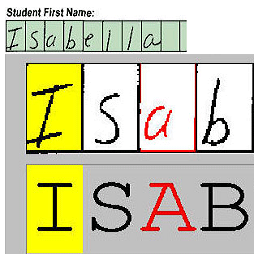Japan is a unique country with a distinct cultural heritage, which is reflected in billions of historical documents that have been preserved. However, the change in Japanese writing system in 1900 made these documents inaccessible for the general public. A major research project has been to make these historical documents accessible and understandable. An increasing amount of research has focused on the character recognition task and the location of characters on image, yet less research has focused on how to predict the sequential ordering of the characters. This is because sequence in classical Japanese is very different from modern Japanese. Ordering characters into a sequence is important for making the document text easily readable and searchable. Additionally, it is a necessary step for any kind of natural language processing on the data (e.g. machine translation, language modeling, and word embeddings). We explore a few approaches to the task of predicting the sequential ordering of the characters: one using simple hand-crafted rules, another using hand-crafted rules with adaptive thresholds, and another using a deep recurrent sequence model trained with teacher forcing. We provide a quantitative and qualitative comparison of these techniques as well as their distinct trade-offs. Our best-performing system has an accuracy of 98.65\% and has a perfect accuracy on 49\% of the books in our dataset, suggesting that the technique is able to predict the order of the characters well enough for many tasks.
翻译:日本是一个独特的国家,有着独特的文化遗产,它反映在保存的数十亿历史文件中。然而,1900年日本书写系统的变化使公众无法查阅这些文件。一个重大研究项目是使这些历史文件便于查阅和理解。越来越多的研究侧重于字符识别任务和图像人物的位置,但较少的研究侧重于如何预测字符顺序顺序。这是因为古典日文的顺序与现代日文非常不同。将字符排序成一个序列对于使文件文本易于读取和可搜索十分重要。此外,这是对数据进行任何自然语言处理(例如机器翻译、语言模型和嵌入词组)的必要步骤。我们探索了预测字符顺序排列任务的几种方法:一种是使用简单的手工制作规则,另一种是使用带有适应性阈值的手工制作规则,另一种是使用经过教师强迫训练的深层重复顺序模型。我们对这些技术及其独特的交易进行了定量和定性的比较。此外,我们的最佳性能系统在98.65__年__年__月




